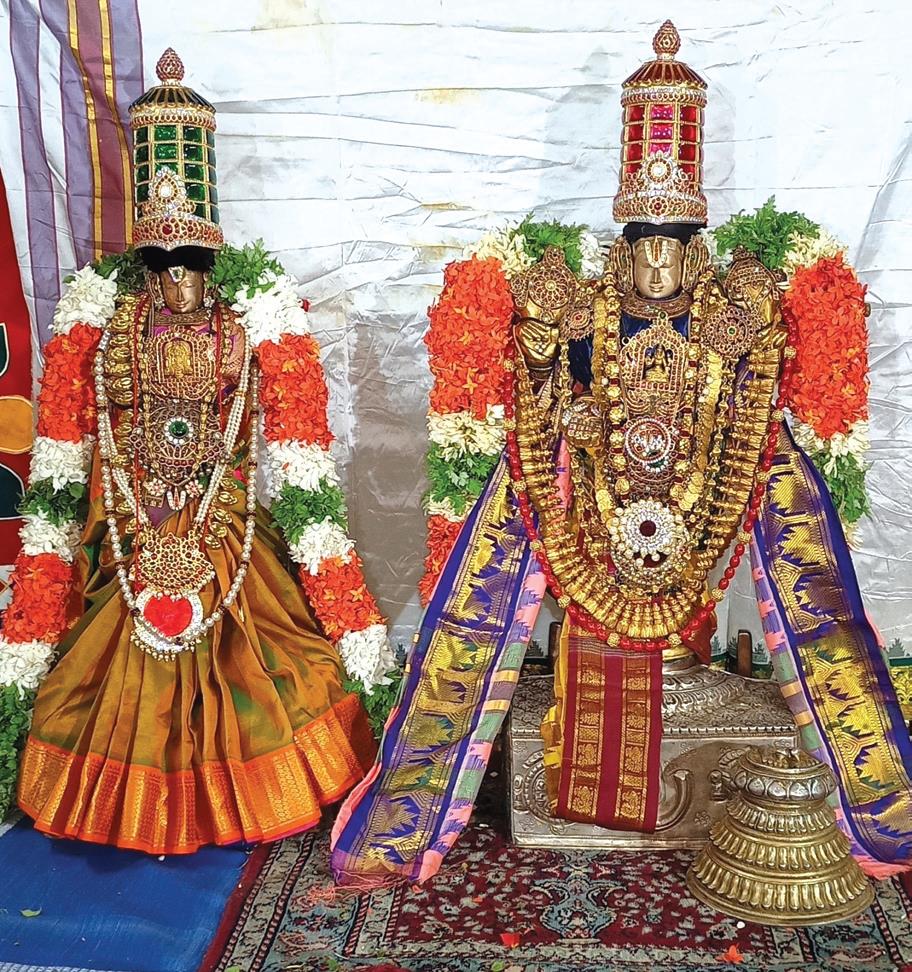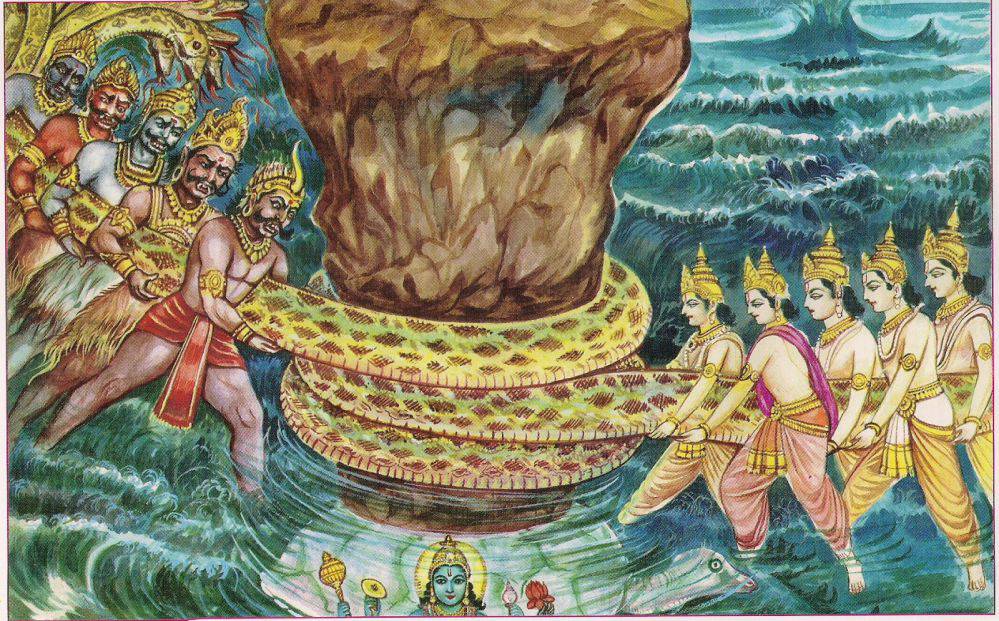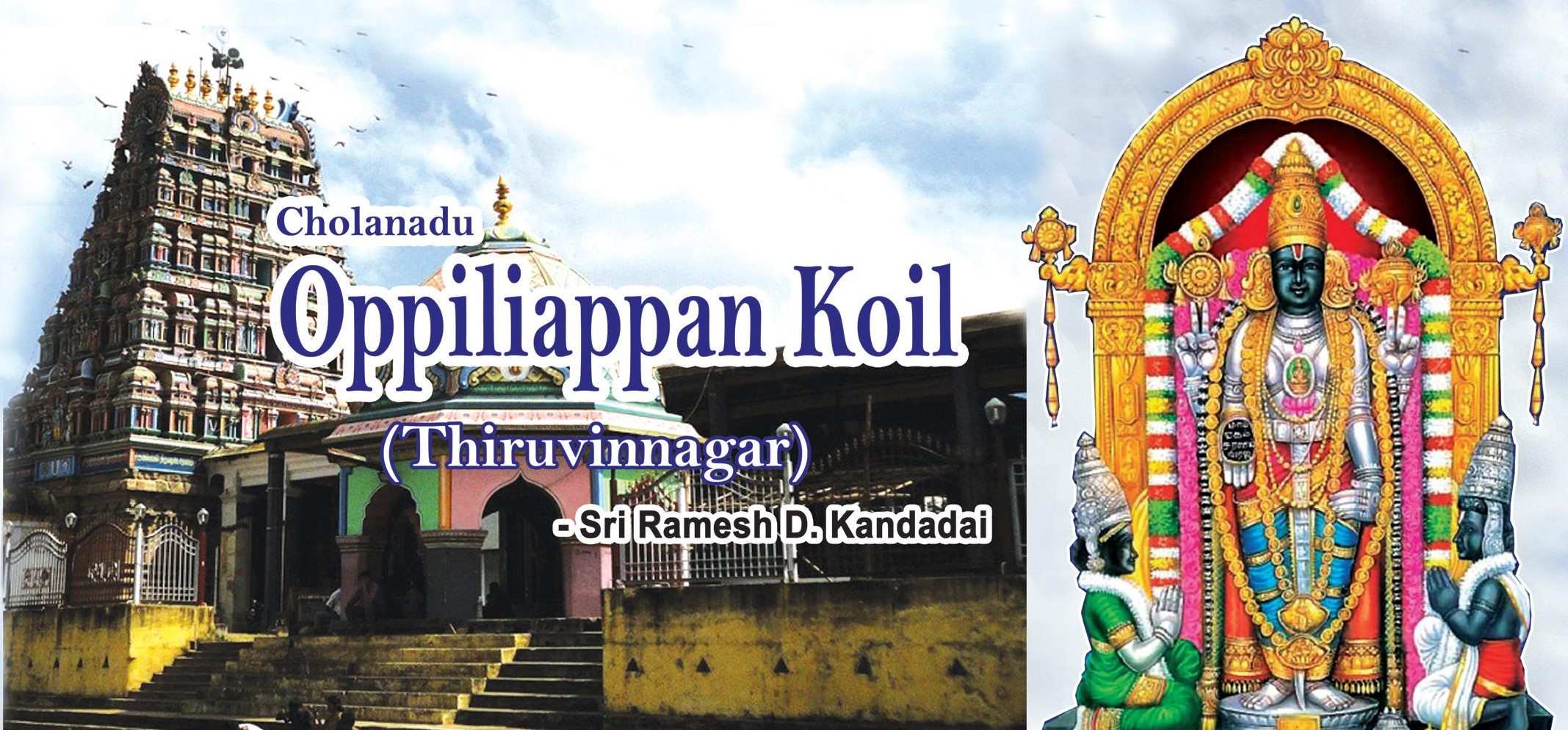Sri Oppiliappan Temple – Thirunageswaram (Thiruvinnagar)
Thiruvinnagar, more popularly known as Oppiliappan Koil is an unusual temple. On the southern bank of the Kaveri River, it is also very well connected by all forms of road transport. This was constructed during the mid chola period in the 8th century with additions by Nayaks later. The exact date of origin of the temple is not known.
Location
Kumbakonam is about 83 km due east of Srirangam between Kaveri and Nattar rivers. Thiruvinnagar or Oppiliappan temple is seven km further east of Kumbakonam.
Click here for Google Maps location – ( Arulmigu Sri Oppiliappan Temple)
Sthalapuranam
It is said Tulasi once prayed to Lord Narayana to be as close to Him as Mahalakshmi is to Him. The Lord told her that Mahalakshmi would be born under a Tulasi bush. He also promised Tulasi that garlands made of her flowers and leaves would always remain special to Him. When Mahalakshmi was found under the Tulasi bush, she was raised as the daughter of Markandeya Maharishi as Bhumi Devi.
Once she reached the age for marriage, during the month of Panguni on Thiruvonnam star on Ekadashi tithi, Lord Narayana decided to test Markandeya further and came up to him in the disguise of a very old man and asked for his daughter’s hand in marriage.
Not realizing what was happening, Markandeya said you are old, my daughter is young and so this is not proper to ask. The old man replied that he was old only in appearance and that he was young at heart. He also sat down and refused to move unless Markandeya agreed to give his daughter in marriage.
Markandeya said she is inexperienced. She may serve you food mistakenly cooked without salt. You will get angry with her as a result. The old man said your daughter’s salt-less food is what is the best food for me. I will not move till you agree.
Panicking, Markandeya prayed to the Lord for guidance on the issue. The Lord appeared before his mind’s eye. When he opened his eyes, the same Lord was in front of him. Markandeya realized that the old man was Lord Narayana. He married off his daughter to the Lord and made the Lord his son-in-law. Thus, the place is called after the Lord who eats only salt-free food ‘Uppiliappan’.
Another interpretation of the name derives from the aneesa or the incomparable nature of the Lord. In Tamil Oppilla means ‘without equal’. The Lord Narayana is considered a father without equal or Oppilla-appan. (Please see Nammalwar’ s mangalasasanam below).

Special Features
As mentioned earlier, all prasad in this temple is salt-free. It is considered a sin to bring salted food into the temple from the outside. This is the only temple where this restriction is honored totally.
- The Moolavar (main deity) and Utsavar (processional deity) both carry the same names.
- The Lord is Oppiliappan or Srinivasan.
- The mother of the universe is Bhumi Devi.
The moolavar (main deity) is seen in a standing posture with Bhumi Devi seated in front on his right along with Markandeya Maharishi seated on His left in the sanctum in Kalyana Thirukkolam. The vimana is Suthananda vimana – one that always gives happiness.
Ahoratra Pushkarani
The temple tank is called ‘Ahoratra Pushkarani‘ as one can bathe in it round the clock, even at night. This place is considered the equivalent of Tirupati.
Akasanagari
Lord Oppiliappan is considered the elder brother of Tirupati Lord Srinivasan. This sthalam is considered the equivalent of Sri Vaikunta and is referred to as Akasanagari. The Lords of various temples went to Alwar Thirunagari to give Archa-rupa darshan to Nammalwar so that he may sing about them.
Five Forms
Lord Oppilliappan gave darshan in five forms –
- Ponnappan,
- Maniyappan,
- Muthappan,
- Ennappan, and
- Thiruvinnagarappan.
Mangalasasanam
In Thiruvaimozhi, Nammalwar dedicates 11 pasurams (3249 to 3259) on seeing the Lord in Thiruvinnagar. He joyously claims to have seen the Lord at Thiruvinnagar as the Lord came to him and claimed Nammalwar as his very own. In these eleven pasurams he goes on to point out that the Lord showed him five forms –
- Ponnappan,
- Maniappan,
- Muthappan,
- Thiruvinnagarappan, and
- finally Ennappan or my father!
It is the Lord who gave him salvation in the shade of His divine feet.
As the decade ends he says those who worship the Lord at Thiruvannagar and have read and understood these eleven pasurams by Satagopa will surely reach the status of Nitya-suris in the eternal service to Him.
In Peria Thirumozhi, Thirumangaialwar (1448 to 1477) questions the Lord why He has abandoned him in samsara just to experience archa rupa in various sthalams. He says “To save Indra and devas, you went begging. Then you also churned the ocean so that they will consume nectar and live forever. You solved Rudra’s problem by cleansing him so he could acquire fame. I don’t need any of these.
All I ask is salvation to Paramapadham. You are capable of putting together things that cannot be put together.
With that ability why are you not helping me? You alone have that right as all of creation resides in You.” Like this, Alwar poses arguments on why the Lord should grant him salvation and how such an act by the Lord is justified based on other actions of the Lord. This interchange is carried on in thirty-four pasurams. He ends by compelling the Lord and the Divine Mother (at Thiruvinnagar) that they need to tell him the time at which they will grant him his salvation.
Further in Thirunedunthandagam (2080), Thirumangai alwar calls Thiruvinnagar the place where the Lord resides. He identifies the Lord as the one who churned the ocean of milk, who damned the salty sea, and who won over Nappinnai in Krishna’s avatar.

Peyalwar in Moonraam Thiruanthathi (2342) refers to Thiruvinnagar as one of the great locations where the Lord appeared eternally young to make his bhakta his very own. In the very next pasuram he refers to many sthalams and lists Thiruvinnagar amongst them as the place where Thiruvikrama who accepted water from Mahabali’s kamandalu (to make all that was Mahabali’s his very own), stood.
Om Namo Narayanaya

